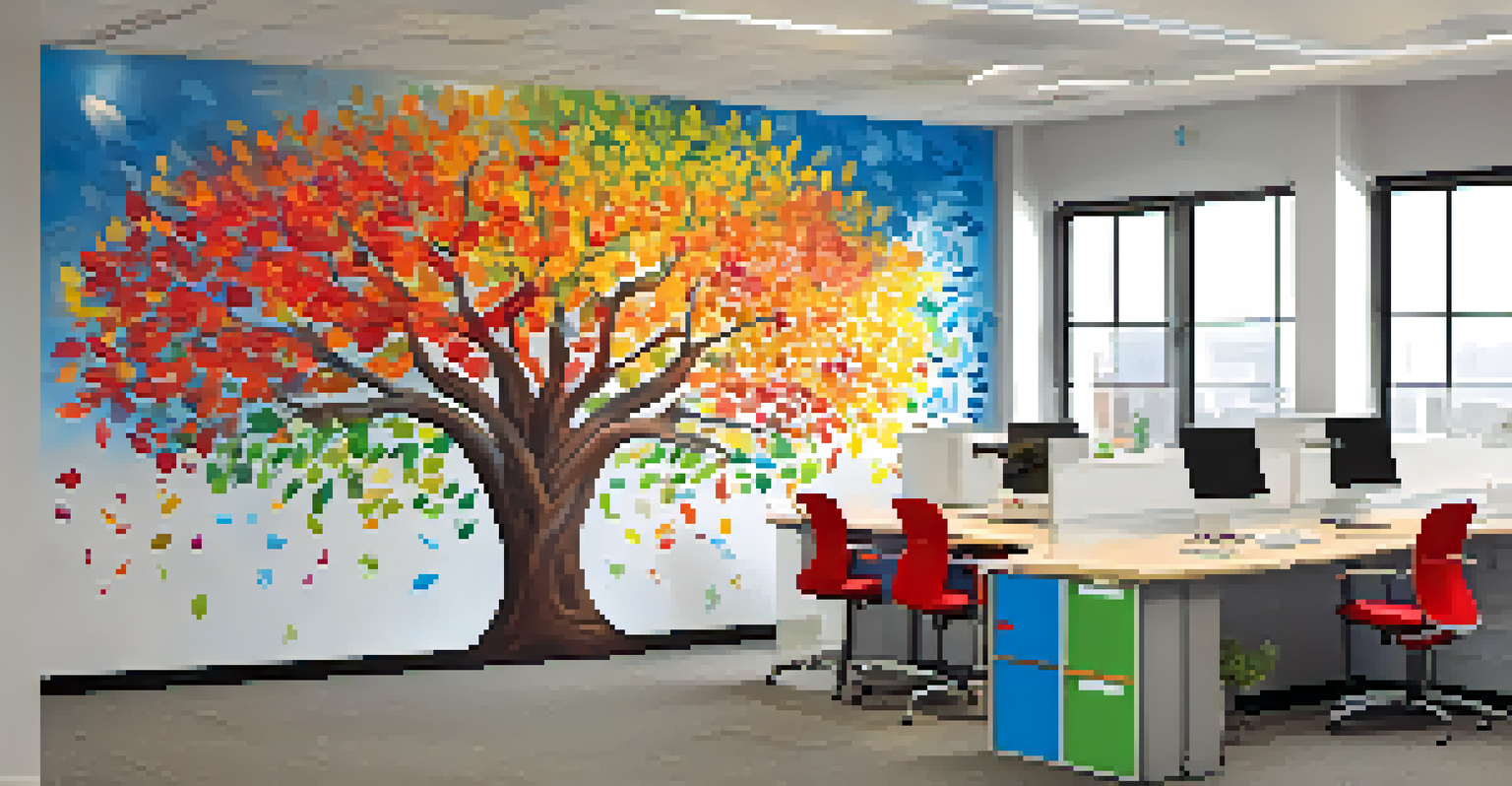Understanding Workforce Diversity: Key Concepts and Benefits

What is Workforce Diversity and Why Does it Matter?
Workforce diversity refers to the variety of differences among people in an organization. This includes race, gender, age, sexual orientation, and even cognitive diversity. Embracing these differences is crucial for fostering an inclusive work environment.
Diversity is being invited to the party; inclusion is being asked to dance.
A diverse workforce can lead to innovative solutions and creative problem-solving. When people from different backgrounds collaborate, they bring unique perspectives that can enhance the overall productivity of the team. This variety can spark new ideas and drive better decision-making.
Moreover, understanding workforce diversity is not just a moral obligation; it's also a business imperative. Companies that prioritize diversity are often more successful, as they can connect with a wider range of customers and respond more effectively to market demands.
Key Concepts of Workforce Diversity Explained
There are several key concepts that underpin workforce diversity. Firstly, inclusion involves creating an environment where all individuals feel valued and empowered to contribute. It’s not enough to just have diverse employees; they must also feel included and respected.

Another important concept is equity, which ensures that everyone has access to the same opportunities and resources in the workplace. This goes beyond simply treating everyone the same; it recognizes that different individuals may need different support to thrive.
Diversity Drives Innovation and Success
A diverse workforce brings unique perspectives that enhance creativity and decision-making, leading to better business outcomes.
Finally, understanding the differences between diversity, equity, and inclusion (often abbreviated as DEI) can help organizations implement effective strategies. Each element plays a role in creating a harmonious workplace where everyone can succeed.
Benefits of Workforce Diversity for Organizations
One of the most significant benefits of workforce diversity is enhanced creativity. Diverse teams are more likely to come up with innovative ideas, as they draw on a wider array of experiences and perspectives. This creativity can be a game-changer in competitive industries.
The greatest asset of a company is its people. They are the ones who make the difference.
Additionally, a diverse workforce can improve financial performance. Research indicates that companies with higher diversity levels tend to outperform their peers financially. This is attributed to better decision-making and a broader understanding of customer needs.
Moreover, embracing diversity can also enhance employee satisfaction and retention. When employees feel valued and included, they are more likely to be engaged and committed to their organization, reducing turnover rates and associated costs.
How to Promote Workforce Diversity in Your Company
Promoting workforce diversity starts with leadership commitment. Leaders must not only advocate for diversity but also model inclusive behaviors. This sets the tone for the entire organization and encourages employees to embrace diversity.
Another effective strategy is to implement diversity training programs. These programs can raise awareness about unconscious biases and equip employees with the tools they need to foster a more inclusive workplace. Training can lead to meaningful conversations and help break down barriers.
Inclusion and Equity Matter
Creating an inclusive environment where all employees feel valued and have equal access to opportunities is essential for fostering diversity.
Lastly, it’s essential to establish measurable diversity goals. By tracking progress and holding teams accountable, organizations can better ensure that diversity initiatives are not just empty promises but concrete actions that lead to real change.
Challenges in Achieving Workforce Diversity
While striving for workforce diversity is essential, it’s not without its challenges. One common obstacle is unconscious bias, which can influence hiring and promotion decisions without individuals even realizing it. Addressing these biases is crucial for ensuring fair treatment.
Another hurdle is resistance to change. Some employees may feel threatened by diversity initiatives, fearing that their own positions could be jeopardized. Creating a culture of openness and communication can help alleviate these fears and promote acceptance.
Lastly, measuring the effectiveness of diversity initiatives can be complex. Organizations need to establish clear metrics for success and continually assess their efforts to ensure they are making meaningful progress towards their diversity goals.
The Role of Leadership in Fostering Diversity
Leadership plays a pivotal role in fostering workforce diversity. Leaders set the vision for what a diverse and inclusive workplace looks like and can inspire others to embrace this vision. Their commitment is vital for creating an environment where diversity can flourish.
Moreover, leaders should advocate for diversity in all areas, from hiring practices to company culture. By actively promoting diversity, they signal its importance to the entire organization and encourage employees to prioritize inclusivity in their daily interactions.
Leadership Shapes Diversity Culture
Leaders play a crucial role in promoting workforce diversity by modeling inclusive behaviors and advocating for meaningful change within the organization.
Additionally, leaders should be open to feedback and willing to adapt strategies based on employee input. This willingness to listen and learn can further strengthen the organization's diversity efforts and create a more cohesive team.
The Future of Workforce Diversity
As workplaces continue to evolve, the emphasis on workforce diversity is likely to grow. Companies that prioritize diversity will not only attract top talent but also adapt more effectively to changing market dynamics. This adaptability is crucial in today's fast-paced business environment.
Furthermore, younger generations entering the workforce place a high value on diversity and inclusion. As these employees become a larger part of the workforce, organizations will need to prioritize diversity to remain competitive and attract this talent pool.

Ultimately, the future of workforce diversity is bright, but it requires ongoing commitment and effort from all levels of an organization. By embracing diversity, companies can unlock new possibilities and drive sustained success.